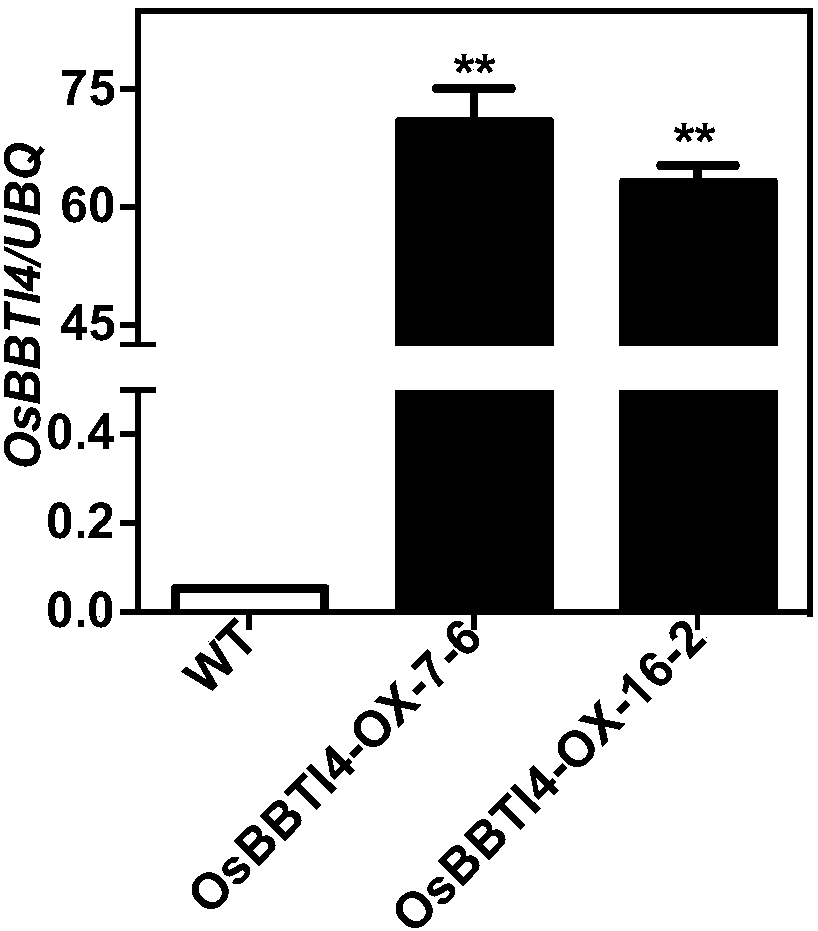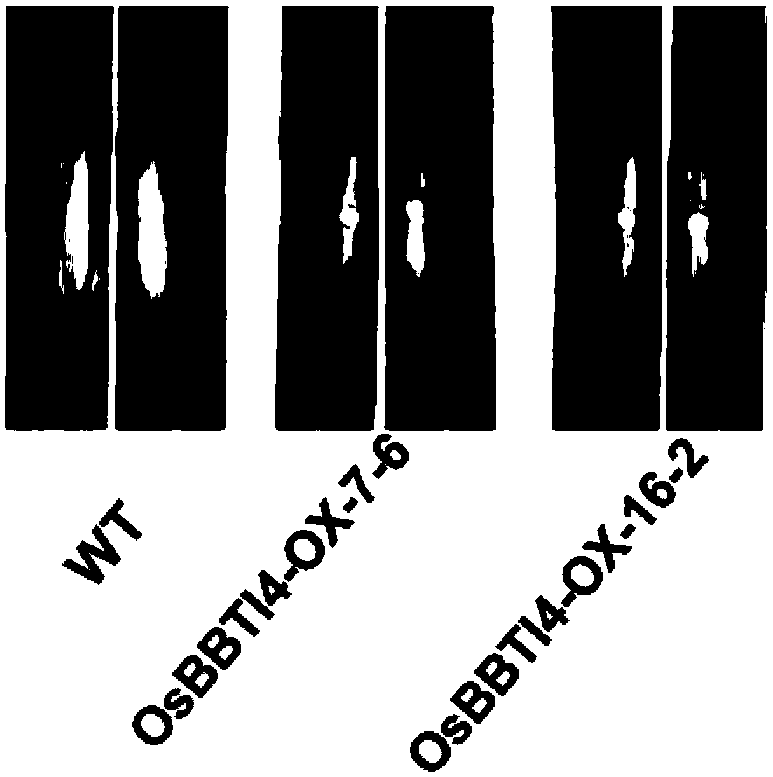Application of rice OsBBTI4 protein gene to improving resistance of rice to rice blast
A technology of resistance to rice blast and rice, applied in the field of genetic engineering, can solve the problems that no research on the biological function of pathogenic fungi has been reported, and there are few studies on trypsin inhibitors, so as to improve plant defense ability and plant disease resistance , Improve the effect of resistance
- Summary
- Abstract
- Description
- Claims
- Application Information
AI Technical Summary
Problems solved by technology
Method used
Image
Examples
Embodiment 1
[0025] 1) Extraction of total RNA
[0026] The japonica rice variety Nipponbare was selected, and when the rice seedlings grew to about two weeks, the leaves were immediately frozen in liquid nitrogen and stored in a -80°C refrigerator. Take part of the leaves, grind them with a mortar, transfer them into a 1.5ml EP tube filled with Trizol lysate, shake fully, extract the total RNA, and identify the quality of the total RNA by electrophoresis.
[0027] 2) Cloning of rice trypsin inhibitor protein gene OsBBTI4 and construction of plant expression vector
[0028] Design primers at both ends:
[0029] P1: 5-ATGAGCAACACCACCATGGC-3 (SEQ ID No. 3),
[0030] P2: 5-CTAGTTCTCCGCTCGGGGTT-3 (SEQ ID No. 4)
[0031] The total RNA obtained in step 1) was reverse-transcribed to synthesize the first strand of cDNA, which was used as a template for PCR amplification with high-fidelity Pfu enzyme. The PCR program was as follows: pre-denaturation at 94°C for 5 minutes, denaturation at 94°C fo...
Embodiment 2
[0035] Identification of disease resistance of OsBBTI4-OX transgenic lines:
[0036] Punch inoculation: When the transgenic rice grows to 5-8 weeks of leaf age, select the second leaf to inoculate with blast fungus, then put the rice in the plant growth box for 24 hours in the dark, then transfer to 12 hours of light, 12 hours Grow under dark conditions for 10-14 days; observe the expansion of the lesion, investigate the disease state, and count the area and biomass of the lesion. Compared with the control, the transgenic rice plant with obvious resistance is the obtained blast-resistant transgenic plant.
[0037] The results showed that OsBBTI4 overexpression transgenic plants had enhanced disease resistance to Magnaporthe oryzae physiological race RB22 compared with wild type (WT) ( image 3 ), at the same time, the relative lesion area (Table 1) and relative fungal biomass (Table 2) of transgenic lines and wild-type diseased leaves were counted. About 50% of ( Figure 4 )...
PUM
 Login to View More
Login to View More Abstract
Description
Claims
Application Information
 Login to View More
Login to View More - R&D
- Intellectual Property
- Life Sciences
- Materials
- Tech Scout
- Unparalleled Data Quality
- Higher Quality Content
- 60% Fewer Hallucinations
Browse by: Latest US Patents, China's latest patents, Technical Efficacy Thesaurus, Application Domain, Technology Topic, Popular Technical Reports.
© 2025 PatSnap. All rights reserved.Legal|Privacy policy|Modern Slavery Act Transparency Statement|Sitemap|About US| Contact US: help@patsnap.com



